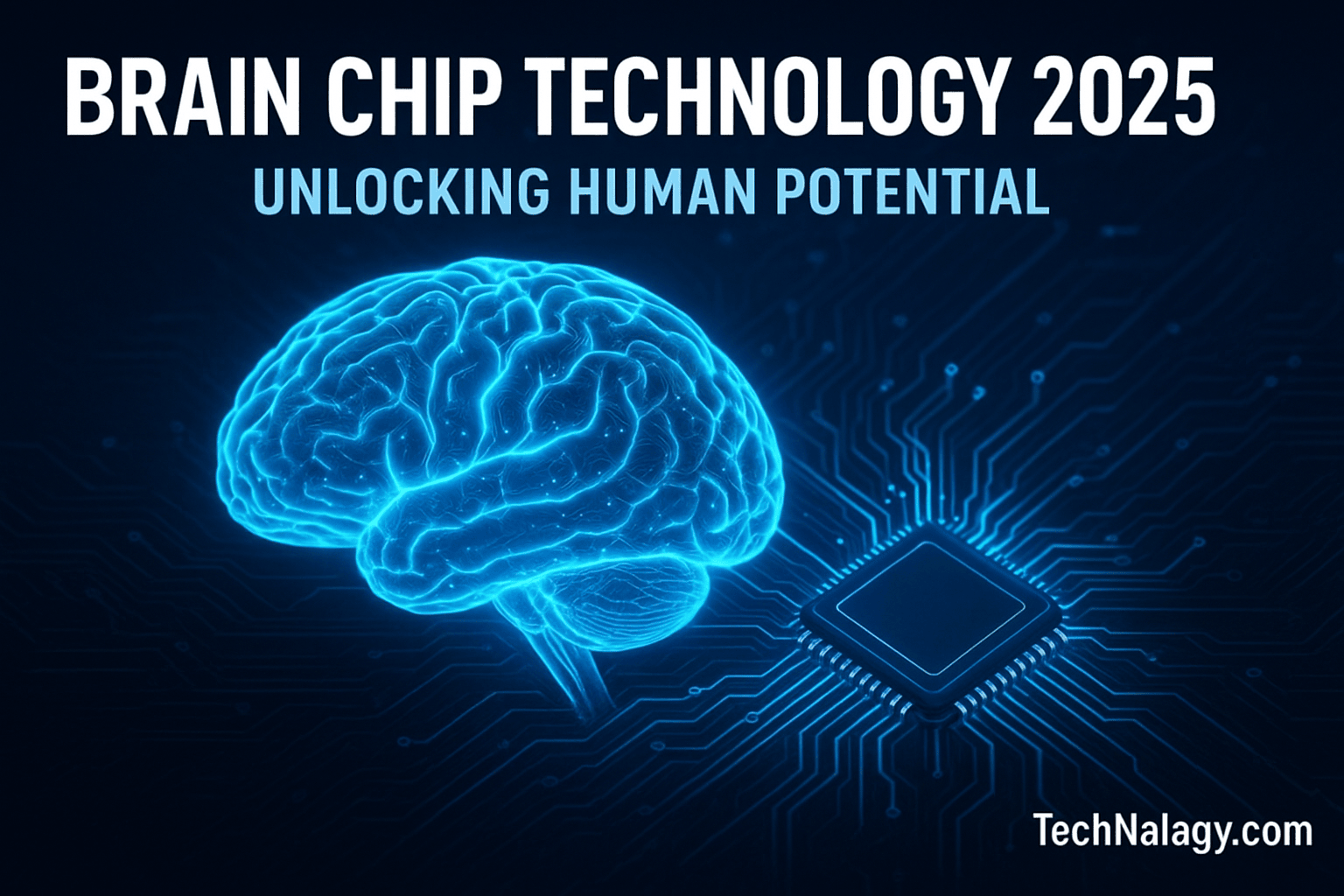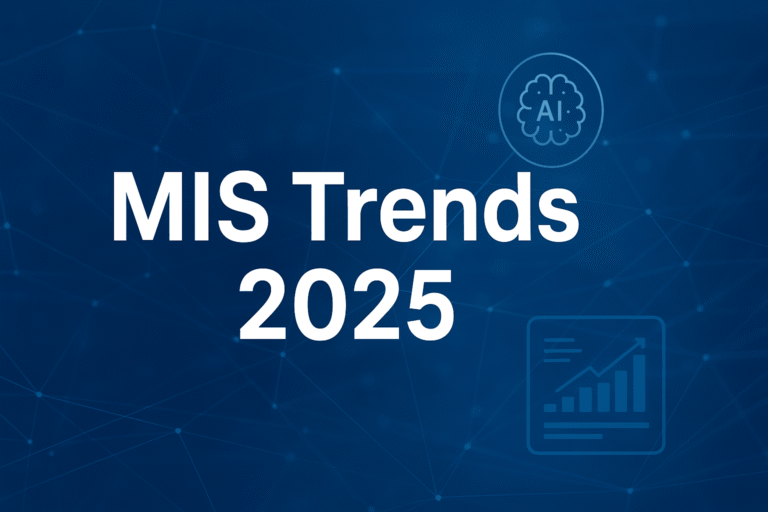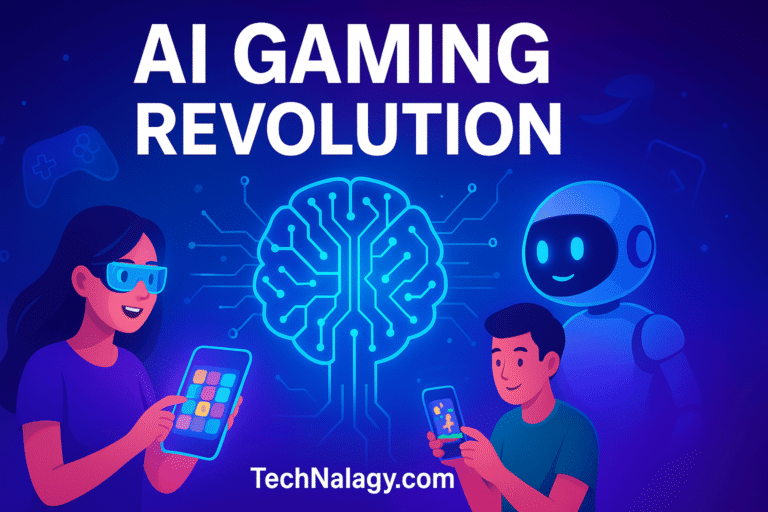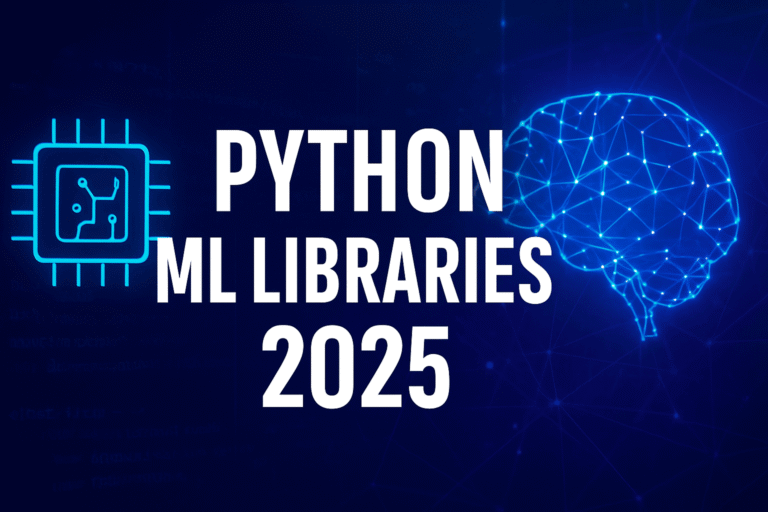Brain Chip Technology in 2025: Unlocking Human Potential with Neural Innovation
🧠 Introduction
The year 2025 is proving to be a turning point for Brain Chip Technology 2025, a field once confined to science fiction but now becoming a tangible reality. Brain chips, or neural implants, are tiny devices that connect directly to the human brain, enabling seamless communication with computers, artificial intelligence (AI), and even other humans. These innovations promise to treat neurological diseases, boost memory, accelerate learning, and unlock new dimensions of human potential.
But along with their promise come big questions: Who will control this technology? How safe is it? And what role will brain chips play in our everyday lives? In this article, we’ll explore the rise of Brain Chip Technology 2025, how it works, where it’s headed, and why it may be one of the most revolutionary breakthroughs of our time.
Table of Contents
What is Brain Chip Technology in 2025?
At its core, Brain Chip Technology 2025 refers to advanced microchips implanted into the brain to monitor, interpret, and influence neural activity. These devices act as a bridge between biological intelligence and digital systems, creating what researchers call brain-computer interfaces (BCI).
The idea is not new — early experiments date back to the 1970s — but rapid advancements in AI, miniaturization, and computational power have pushed the concept from labs to real-world testing. By 2025, we now have chips capable of restoring lost movement in paralyzed patients, transmitting thoughts into digital text, and even controlling robotic limbs with remarkable accuracy.
How Brain Chip Technology Works
The Science Behind Neural Implants
Brain chips function by detecting and decoding electrical signals generated by neurons. Electrodes implanted into specific brain regions capture these signals and transmit them to an external processor. The processor then translates them into digital commands that can control devices, store data, or send information back into the brain.
This feedback loop allows for two-way communication: the brain sends instructions to machines, and machines can send information directly back into the brain, bypassing traditional sensory pathways.
AI and Human Brain Integration
Artificial intelligence plays a vital role in making sense of the enormous amounts of data generated by brain activity. Advanced machine learning models can analyze patterns in neural signals and improve chip accuracy over time.
For example, these chips connect naturally with AI-driven tools already shaping AI in Everyday Life. Imagine instantly recalling information without searching Google, or learning a new language through direct brain-AI interaction — that’s the direction Brain Chip Technology 2025 is heading.
Key Companies and Innovators in 2025
Neuralink and Its 2025 Projects
One of the most well-known players in the field is Neuralink, founded by Elon Musk. By 2025, Neuralink has advanced from animal testing to early human trials, with results showing restored motor functions in paralyzed individuals. The company envisions everyday applications where people could type emails or browse the web purely through thought.
Global Competitors in Brain Chip Research
Neuralink isn’t alone. Startups and academic research groups in Europe, China, and India are actively developing brain chip systems. For example, European researchers are testing chips to restore vision, while Chinese labs are pushing forward with brain-to-cloud communication experiments.
According to MIT Technology Review, global investment in brain chip technology has surged, with billions flowing into startups that combine neuroscience with advanced AI systems.
Applications of Brain Chip Technology 2025
Medical and Healthcare Uses
Healthcare remains the most promising area for Brain Chip Technology 2025. Patients with spinal cord injuries, Parkinson’s disease, or Alzheimer’s are already seeing benefits from clinical trials. Some chips aim to restore lost senses such as hearing or vision, effectively reversing disabilities that were once considered permanent.
Education and Cognitive Enhancement
Beyond medicine, brain chips hold the potential to change how we learn. Imagine downloading entire textbooks into your memory or instantly acquiring new skills. Cognitive enhancement through brain chips could transform education, creating opportunities for faster and more personalized learning.
Workplace and Productivity Benefits
In the professional world, brain chips can boost productivity by enabling direct thought-to-text transcription. Workers may collaborate with AI systems more efficiently, accelerating creativity and problem-solving. The integration of brain chips with AI assistants could redefine how we interact with technology at work.
Military and Defense Applications
Defense agencies are also exploring brain chips for enhanced soldier cognition, rapid decision-making, and direct control of drones or robotic systems. While controversial, these applications highlight the wide-ranging potential of brain-chip-enabled human-AI integration.
Brain Chip Technology and Quantum Computing
One of the biggest challenges of Brain Chip Technology 2025 is managing the massive data generated by brain signals. Here’s where quantum computing enters the picture. By harnessing the processing power of quantum systems, brain chips could decode and transmit neural data at unprecedented speeds.
This connection between neuroscience and quantum science is already being explored in the Future of Quantum Computing in 2025. Experts predict that combining these fields will enable real-time, large-scale brain-to-machine communication — a giant leap toward a future where human thought merges seamlessly with digital networks.
Ethical, Privacy, and Security Concerns
Who Owns Your Thoughts?
If brain chips can read and store thoughts, who controls that data? Privacy is one of the biggest concerns, with critics warning that companies could monetize or manipulate brain activity much like they do with online data today.
Ethical Dilemmas of Human-AI Integration
Another issue is the ethical question of enhancement versus treatment. Should brain chips be limited to medical use, or should healthy individuals be allowed to enhance memory, intelligence, or creativity? This debate is central to the ethics of Brain Chip Technology 2025.
Accessibility and Digital Divide
There’s also the issue of inequality. If only the wealthy can afford cognitive enhancements, society risks creating a “neuro-elite,” widening the digital divide and creating new forms of inequality.
Future of Brain Chip Technology 2025 and Beyond
Predictions for the Next Decade
In the next 10 years, experts predict brain chips will expand beyond healthcare into mainstream consumer applications. From immersive gaming experiences to direct brain-to-cloud backups, the possibilities are limitless.
Human Potential and Neural Innovation
This future aligns with the breakthroughs highlighted in Neural Interfaces 2025, where brain-to-computer connections are already reshaping human capability. Brain chips could unlock creativity, accelerate problem-solving, and enable entirely new forms of human communication.
Conclusion
Brain Chip Technology 2025 marks the beginning of a new era where the human brain and advanced technology converge. From restoring movement in paralyzed patients to enhancing everyday productivity, brain chips have the power to redefine what it means to be human.
Yet, the road ahead is filled with challenges — ethical dilemmas, privacy risks, and the question of accessibility. If developed responsibly, however, brain chip technology could unlock an unprecedented level of human potential, blending biology with digital innovation in ways that transform our world forever.

Kamran Khatri is the founder of technalagy.com, where he shares insights on AI, future tech, gadgets, smart homes, and the latest tech news. Passionate about making innovation simple and accessible, he writes guides, reviews, and opinions that help readers stay ahead in the digital world.







